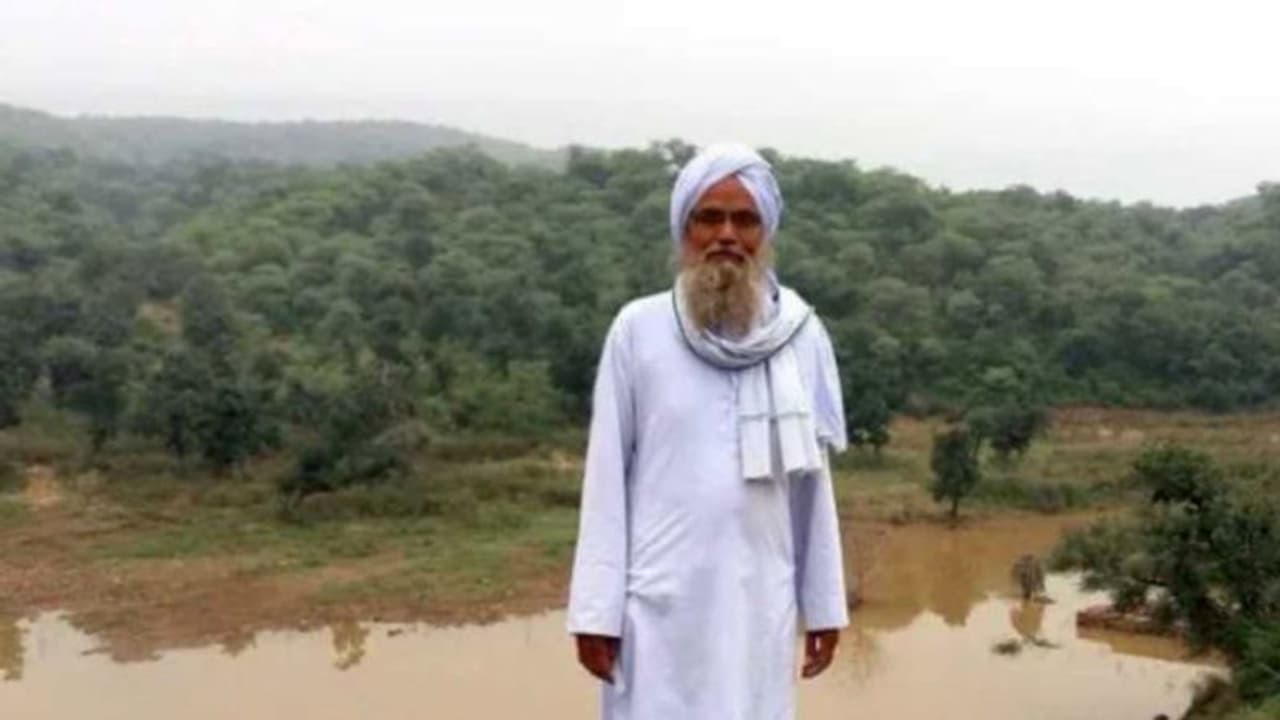As a result of Ibrahim Baghola's efforts, there was a gradual improvement in the groundwater level and now it is available at about 150 feet below the surface, says Yunus Alvi
Ibrahim Baghola, 65, a resident of village Baghola in the Nuh district of Mewat, is called the ‘Waterman of Mewat’ for his extraordinary accomplishment in water conservation in the arid, rocky Aravalli ranges of Haryana.

He has been engaged for the last three decades in building ponds on top of the Aravalli ranges and making check dams to arrest soil erosion in an effort to raise the water levels in the region.
At present, Ibrahim, with the nationally acclaimed ‘Waterman’ Rajendra Singh is engaged in building a check dam in Mewat. Recently, Haryana Chief Minister, Manohar Lal Khattar inaugurated the construction of a check dam in the village of Pat Khori.
On the agenda is the construction of many more such check dams in Mewat to increase the water level in the Aravalli hills here.
Before the year 2000, the Sewal dam in the Ghata Shamshabad area was a dry piece of land but today it is filled with water, thanks to Ibrahim Baghola’s hard work.
Baghola played a key role in rejuvenating the Saurawala Johad (pond) in the mountain above Bhod village. Presently this pond is full of water and is known as ‘Bhura Sayyid's Johad’.
Declared as the most backward district by NITI Aayog in 2018, the groundwater situation is the lowest ever in all four blocks of Mewat (Nuh) of Haryana.
According to the report of the Haryana Public Health Engineering Department, the condition of drinking water in Nuh is the worst in the state. People have to travel several kilometres to arrange potable water.
During the summer months, due to water shortage, wild animals intrude into the villages. There have been several instances of leopards and jackals entering villages and threatening human beings.
In these circumstances, Haji Ibrahim started a campaign for water conservation. He, in fact, undertook projects that generally government agencies should be taking responsibility for.
His first idea was to build a check dam to conserve water for people living in the twin villages of Ghata-Shamshabad.
Ibrahim said, “In the year 2000, we had good rainfall. But in spite of this, the villagers faced acute water shortage.”
He decided to do something about it. He thought of stopping the water coming down from the Aravalli hills and eventually realized he should build a check dam to arrest and store the rainwater.
Ibrahim Baghola spoke with his friend Mahant Tiwari, who works with the Gandhi Museum in Delhi. After walking miles across the Aravallis, he zeroed in on a place between Ghata and Shamshabad villages to build a check dam.
As he had no prior knowledge, his friend Tiwari made him contact Rajinder Singh, who is a well-known water conservationist and heads an organization called ‘Tarun Bharat Sangh’.
From Rajinder Singh, Ibrahim learnt about the technicalities of constructing a dam and sought his help to execute his plans.
Ibrahim started construction with his own money. Soon, he faced an obstacle and sought help from friends and villagers. After four months of hard work and an expenditure of close to Rupees two lakhs, he managed to build a 1.5 km dam 50 yards above the Aravalli foothills.
Many villagers worked free of cost and also donated stones for the dam.
The report of the Hydrology Wing of the Haryana Agriculture Department states that from 1974, the groundwater level started falling continuously in this area. In the year 2000, the groundwater level in this area reached more than 400 feet below the surface.
It continued to fall and reached 1000 feet deep.
As a result of Ibrahim Baghola's efforts, there was a gradual improvement in the groundwater level and now it is available at about 150 feet below the surface.
In view of this result, in the year 2006, the Forest Department decided to build dams in two villages adjacent to the Aravalli ranges. Work on some of those dams is still in progress.
Environmentalist Chetan Agarwal, who has worked with an NGO Sehgal Foundation, says, “The land in the village adjacent to the Aravalli is sandy. But due to the high slope, water was wasted. After individual efforts, the groundwater level has improved and benefited some 4,000 locals in the area.
This article originally appeared in AwazTheVoice, and has been reproduced with explicit permission
